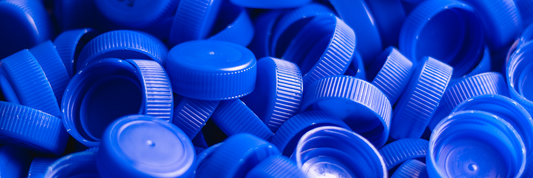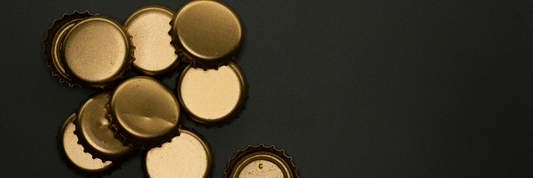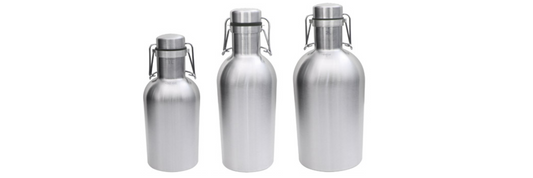In a world where sustainability is becoming more and more important, plastic straws are coming under fire. But can metal straws save your business? In the article from today, we'll explore the benefits and disadvantages of using metal straws for businesses, covering everything from branding opportunity to environmental impact.
Understanding of Stainless Steel in Metal Straw
Metal straws are most commonly made of stainless steel, specifically food-grade stainless steel. This is a specific type of steel alloy specially designed for safe contact with food and beverages. Here is the composition of this stainless steel:
- 18% chromium: This element forms a protective oxide layer on the surface of the steel, preventing rust and corrosion. The chromium content is what makes it "stainless."
- 8% nickel: This element contributes to the overall strength and ductility of the steel, making it less prone to bending or cracking.
- 50% minimum iron: This forms the base of the alloy and provides its structural integrity.
- Less than 0.8% carbon: This ensures the steel is weldable and easy to work with during manufacturing.
What Are Features of Sugarcane Straw?
Classification of Metal Straws
Metal straws come in a delightful variety, catering to different preferences and drinks.
Classified by design
- Straight: The classic, no-frills option, perfect for everyday use. Usually around 7-8 inches long and 0.25 inches in diameter.
- Bent: Ideal for taller glasses or awkward angles, often angled at 45 degrees. Length varies from 8-10 inches, with similar diameter to straight straws.
- Telescopic: Compact and portable, these straws collapse for easy storage and expand when needed. Often 6-8 inches long when extended, with a slightly thicker diameter (0.3 inches) for stability.
- With silicone tips: Provide a softer mouthfeel and protect teeth from cold metal. Tips can be removable for cleaning. Sizes mostly follow standard dimensions.
Classified by Sizes
Width:
- Standard: 0.25 inches (6.35 mm) - Most common diameter, suitable for water, juices, and thin smoothies.
- Wide: 0.4 inches (10.16 mm) - Ideal for thick smoothies, bubble tea, and milkshakes.
- Extra-wide: 0.5 inches (12.7 mm) - Less common, but perfect for very thick drinks or those with large chunks like boba pearls.
Length:
- Short: 6-7 inches (15.24-17.78 cm) - Convenient for smaller cups or travel mugs.
- Standard: 8-10 inches (20.32-25.4 cm) - Most versatile, suitable for regular glasses and mugs.
- Long: 10-12 inches (25.4-30.48 cm) - Perfect for tall glasses, iced beverages, or travel tumblers.

Advantages and Disadvantages of Metal Straw
Advantages of Using Metal Straws for Business
Using metal straws for your business can offer several advantages, as follow:
Financial:
- Cost-effective in the long run: While the initial cost of purchasing metal straws seems higher than disposable options, their reusability leads to significant savings in the long term.
- Reduces operational costs: Eliminating the need for constant ordering and storing disposable straws simplifies your operations and potentially lowers overall costs.
Customer Experience:
- Enhances customer perception: Offering metal straws shows you care about details and customer comfort, potentially improving satisfaction and loyalty.
- Caters to specific preferences: Some customers prefer the taste and feel of metal straws, providing them with a more enjoyable beverage experience and potentially attracting them to your business.
Marketing:
- Branding opportunity: Customized metal straws can be branded with your logo or slogan, serving as a unique and portable marketing tool that spreads brand awareness every time used.
- Differentiator from competitors: In a crowded market, offering metal straws as a sustainable alternative can set your business apart and attract customers who value eco-friendly choices.
Disadvantages of Metal Straws
While there are numerous benefits to using metal straws, it's important to consider the potential drawbacks before implementing them in your business:
- Cleaning and storage: Reusable straws require additional cleaning procedures and storage space compared to disposable options. You may need to invest in cleaning brushes, storage solutions, and potentially additional staff time for hygiene maintenance.
- Breakage and replacement: Metal straws are not indestructible and can be bent, damaged, or lost. Be prepared for potential replacement costs and customer inconvenience if straws break or go missing.
- Potential resistance: Not all customers may be receptive to metal straws. Some may prefer disposable options due to habit, taste, or concerns about safety and potential heat transfer. Be prepared to offer alternative options for hesitant customers.
- Potential resistance: Not all customers may be receptive to metal straws. Some may prefer disposable options due to habit, taste, or concerns about safety and potential heat transfer. Be prepared to offer alternative options for hesitant customers.
Are Metal Straws Environmentally Friendly?
The environmental friendliness of metal straws is a complex issue with both positive and negative aspects:
Environmentally friendly disposable biological straws
Positives:
- Reusable: Unlike disposable plastic straws, metal straws can be used countless times, significantly reducing plastic waste and pollution. This is a major advantage for the environment, especially considering the billions of plastic straws used and discarded each year.
- Durable: Metal straws are generally more durable than plastic and can last for years with proper care. This reduces the need for frequent replacements and further minimizes waste generation.
- Recyclable: Most metal straws are made from recyclable materials like stainless steel, allowing them to be recycled at the end of their lifespan and potentially used again in other products.
Negatives:
- Production impacts: Manufacturing metal straws requires energy and resources, including mining and processing metals. This process can have its own environmental impact, including greenhouse gas emissions and land degradation.
- Transportation and cleaning: Transporting and cleaning metal straws also requires energy and resources, which adds to their overall environmental footprint.
- Potential for improper disposal: Even if reusable, metal straws can still end up in landfills if not disposed of properly. This can occur if they are lost, accidentally thrown away, or not recycled at the end of their life.
Are Silicone or Metal Straws Better?
To determine which one is better, here is a table comparing their key features:
|
Feature |
Silicone |
Metal |
|
Material |
Food-grade silicone |
Food-grade stainless steel (usually) |
|
Durability |
Lower, prone to tears and wear |
Higher, lasts for years |
|
Environmental Friendliness |
Lower, petroleum-based (plant-based options exist) |
Higher, reusable and long lifespan |
|
Safety & Comfort |
Soft, gentle on teeth, warmer/cooler feel |
Cold/hot to touch, possible chipped teeth |
|
Taste & Experience |
Can retain flavors, softens drink taste |
Some claim enhanced taste, possible metallic taste (low-quality) |
|
Cleaning & Maintenance |
Regular, soapy water, may hold stains |
Dishwasher safe (some require special brushes) |
|
Aesthetics & Variety |
Vibrant colors, playful designs, flexible |
Sleek styles, colors, finishes |
|
Price |
Generally lower |
Generally higher |
|
Suitability for |
Children, seniors, comfort- & aesthetics-prioritized |
Durability & eco-friendliness-prioritized, neutral taste preferred |
|
Portability |
Foldable/rollable |
Rigid |
|
Hot/Cold Beverages |
Comfortable for both |
Uncomfortable for hot drinks |
As the table above, to choose the better straw, it depends on your purpose and prioritize:
- Durability and Environmental Friendliness: Metal will be the better choice. Its long lifespan and reusability significantly outweigh the initial environmental impact of its production.
- Safety and Comfort: Silicone might be ideal. Its soft texture prevents chipped teeth and provides a more comfortable experience, especially for hot drinks.
- Aesthetics and Variety: Silicone offers a wider range of colors and designs, allowing for playful personalization.
- Taste and Neutral Experience: Metal is generally preferred for its neutral taste profile and lack of flavor retention.
- Price: Silicone is usually the more affordable option.
Where to Buy Metal Straws in Canada?
Metal straw is widely used, therefore you can easily find them in both online retailers or physique stores, for examples:
Online retailers: Amazon, Well, Alibaba, Greenmunch,…
Physical Stores:
- Zero-waste and eco-friendly shops: Many local shops specializing in sustainable products may carry metal straws.
- Kitchenware stores: Some larger kitchenware stores like Williams Sonoma or KitchenAid may have a selection of metal straws.
- Coffee shops and tea shops: Some cafes and tea shops may sell branded metal straws or stock them for customer use.
Frequent Asked Questions
Are metal straws expensive
The cost of metal straws can vary quite a bit, ranging from around $5 to $30 or even more. It depends on several factors, including:
- Material: Stainless steel is the most common and affordable option, but other materials like titanium or copper can be pricier.
- Brand and Design: Some brands specialize in high-end, stylish straws with unique designs, which naturally come at a higher cost.
- Features: Straws with additional features like insulation, telescoping mechanisms, or silicone tips may be more expensive than basic models.
Are Metal Straws Dangerous
While generally safe, metal straws can pose some potential risks:
- Injury: Metal edges can be sharp, so biting down hard or handling carelessly could cause chipped teeth or cuts. Choose straws with rounded edges and supervise children using them.
- Heat/Cold Transfer: Cold beverages can feel uncomfortably cold on metal, and hot drinks can quickly heat up the straw, potentially burning sensitive lips. Double-walled straws can help with this.
Overall, with proper care and awareness, metal straws can be used safely by most people.
Can Metal Straws Grow Mold
Mold growth on metal straws is unlikely if you clean them properly. However, moisture can accumulate inside narrow straws, creating conditions for mold to develop. Here's how to prevent it:
- Clean after every use: Rinse your straw thoroughly with warm soapy water immediately after using it.
- Use a cleaning brush: For narrow straws, use a long, thin brush to reach all the interior surfaces.
- Dry thoroughly: Don't leave your straw damp. Shake it to remove excess water and air-dry it completely before storing.
- Consider dishwasher-safe options: Many metal straws are dishwasher safe, simplifying the cleaning process.
How to Clean a Metal Straw?
There are different ways to clean a metal straw, including:
- Dishwashing: Many metal straws are dishwasher safe. Check the manufacturer's instructions and place them on the top rack for thorough cleaning.
- Handwashing: Wash your straw with warm soapy water and a regular dish brush. Pay special attention to the inside and any crevices.
- Cleaning brushes: For narrow straws, use a long, thin brush specifically designed for straw cleaning. These brushes can reach all the nooks and crannies to remove any residue.
- White vinegar rinse: For stubborn stains or odors, soak your straw in a diluted white vinegar solution for 5-10 minutes, then rinse and wash it thoroughly.
Metal straw is one of the reusables types can be replace plastic straw. There are different types that your business can consider including glass straw, silicone straw or biodegradable straw. At Kimecopak, we offer biodegradable straws for North American Market. Our straws are made from various materials including bamboo, sugarcane or plant-based material without coating, or chemical, safe for use, no soggy even in hot water. To learn more about them, please contact us via email halo@kimecopak.ca or Kimecopak Facebook Fanpage.









